The British Army has taken delivery of three more Apache AH-64E attack helicopters, bringing its fleet closer to full operational capability.
The 45th, 46th, and 47th helicopters were transported from the United States to the United Kingdom, marking another milestone in the modernisation of the Army’s air capabilities.
In partnership with Boeing UK, a total of 50 Apache AH-64E helicopters will be delivered. The latest arrivals were flown into Britain by the United States Air Force, continuing the steady rollout of the cutting-edge aircraft.
The AH-64E is a significant upgrade over its predecessor, the Apache Mk1, which has been in service with the British Army since 2001. The new variant offers enhanced speed, range, and capability, making it a formidable force on. With improved sensors and targeting systems, the AH-64E can identify and engage targets at greater distances with increased precision, say the builders.
The fleet is expected to be fully operational in the coming months, with ongoing training and integration efforts ensuring pilots and ground crews are fully prepared to utilise the enhanced capabilities of the aircraft.
What is the Apache AH-64E?
According to Defence Equipment & Support (DE&S), the Boeing-manufactured Apache AH-64E is a twin-engine, tandem-seat helicopter designed for a range of combat operations in diverse environments, day and night.
Primarily built to locate and destroy enemy air defence units, tanks, and armoured vehicles, the AH-64E is armed with a 30mm automatic cannon, wing-mounted 70mm Hydra rockets, and Hellfire missiles. The new variant surpasses the capabilities of the Apache Mk1, offering greater speed, range, and enhanced target acquisition systems.
Equipped with advanced Intelligence, Surveillance, Target Acquisition, and Reconnaissance (ISTAR) capabilities, the Apache AH-64E can also perform escort and force protection duties, as well as Command and Control (C2) missions.
Its distinctive Longbow radar, mounted above the main rotor, allows it to detect and classify up to 256 potential targets, display 128 of them to the crew, and prioritise the top 16 threats in a matter of seconds.
Additionally, the helicopter features state-of-the-art optical and thermal imaging sights, enabling effective operation in low-visibility conditions and at night. Range and endurance can be extended using wing-mounted fuel tanks, while a fully integrated Defensive Aid Suite ensures the protection of both the aircraft and its crew.
At the UK Defence Journal, we aim to deliver accurate and timely news on defence matters. We rely on the support of readers like you to maintain our independence and high-quality journalism. Please consider making a one-off donation to help us continue our work. Click here to donate. Thank you for your support!


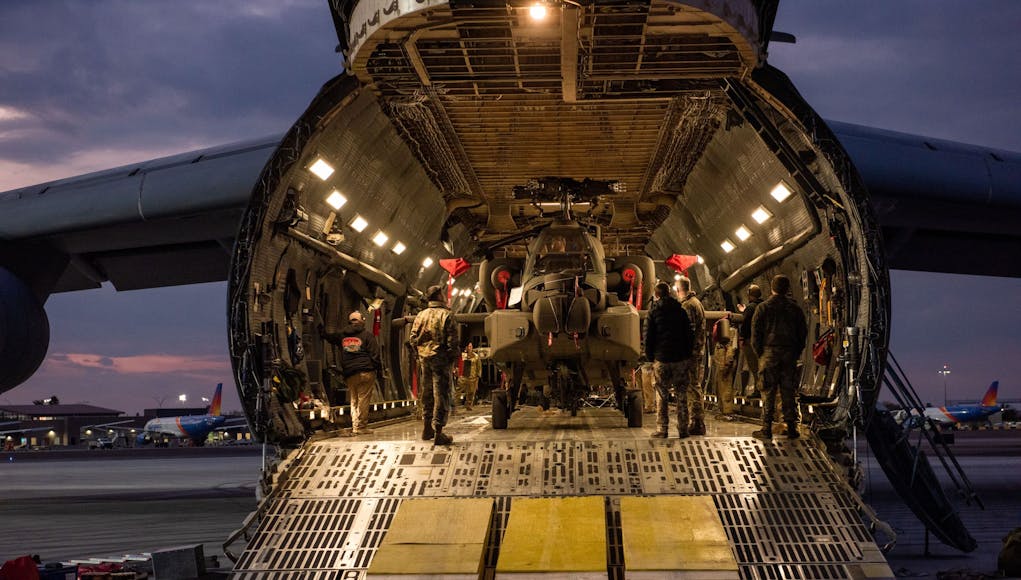
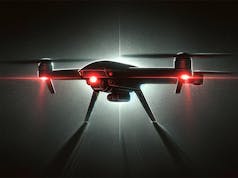


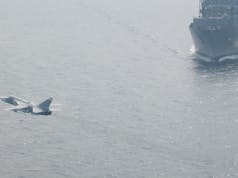
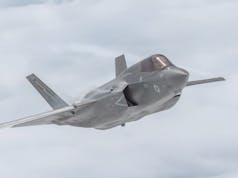



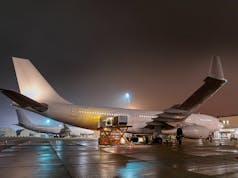


I recall that the army was supposed to get 99 Apaches back in the day. Cut down to 67 of the Mk1. Now we will have a fleet of 50. Still, they are most welcome and more advanced than their predecessors.
Their weapons need upgrading. The idea of an attack helicopter providing support directly above the troops is now outdated. They need to be way way back and rely on lobbing missiles from range.
Good to have the upgrades but now let’s finish that off with proper weapon systems for once.
Steve, Close Air Support is outdated? Really?
Not been paying attention have you? 🤣
Very much so. Both Russia and Ukraine have had to keep their helicopters a very long distance from the front line to avoid them getting shot down. Too many options to shoot them down in the modern battlefield.
Got to say haven’t even heard helicopters mentioned in the conflict for a long, long time which in fact I was reminded of literally 2 days back when a Russian blogger was strangely emotionlessly showing a Russian helicopter being taken out by an attack drone. Which then reminded me the last time before this was a month back when a Ukranian sea attack drone took another out with a missile. So helicopters are certainly struggling anywhere near the front line over land or sea. So I would say that Steve is talking a lot of sense when he sensibly says that new tactics and longer range weapons are required to keep them relevant certainly as part of a discussion but as it stands based on 50 year old philosophies that should at least be questioned based on common sense let alone Ukranian war experience.
USMC are way ahead on just that. Last month they test fired a long range missile from an attack helicopter.
That’s good to hear so seems Steve is supported by the US military then in his concerns. One wonders how the targeting factor enters the equation here. And indeed if whatever these tests lead to will become available to our Apaches.
Great now order another 50.
Considering budget constraints I would rather they order a few thousand fpv drones and jammers. Come at a fraction of the price and give significantly more capability.
Although drones can be purchased and built quickly if needed, so maybe buying kit with a longer build time is a better option. Assuming the next war is one of choice and done at our own timing.
Drones do not have the same loiter time. My DJI can fly no more than 30 minutes without flattening the battery. If they developed a reasonable sized drone that could stay up for a few hours before needing a battery swap, that would be handy, plus the ability to chuck a NLAW or two.
Ukraine are now using nlaw against troops as they have found mines and drones far more effective against tanks tanks to their much longer range and cost.
I think that is a very valid point, in terms of drones we need continuous development capability and preparatory production options examined and prepared for but stock piling great amounts of them would be near pointless the development of drones in the Ukraine especially in the realm of counter measures and counter counter measures can be almost monthly.
Ex RoyalMzrine raises a valid consideration too but the situation and varied questions to me seem a little nebulous to answer at this stage. I’m not convinced that Apaches can exploit their loiter time effectively it would be far too dangerous in most scenarios I would say and attack drones are one way of course. Equally you can build bigger drones with increased loiter time but it’s been found that that can become counter productive because the bigger the drone under many, probably most circumstances beyond high altitude, the more vulnerable it becomes. I don’t think anyone is considering producing a drone even a third or half the size of the Apache to operate in an offensive role near the front line, which puts things into a little perspective surely. I do think all manner of innovations may develop over the next 5 to 10 years to increase drone capabilities and I know from research that includes battery technology that will at least double loiter time if costs can be controlled. So we have to make decisions relevant to tomorrow not just today.
You need more people first.
The piece I’m most interested in is the apparent ability to control drones that the E-model has; not sure which drones, or whether we’ll actually take advantage, but a potentially impressive capability that is becoming more relevant.
Also, with the questionable range, price, and delivery of the JAGM (especially now that they’ve come up with JAGM-ER to push the range out to Brimstone 1/2 levels), I’d like to think there’s a good argument for formal integration of Brimstone.
Integration of British missiles at point of delivery should have been condition of sale.
Brimstone, Brimstone, Brimstone . . Yes its a kick ass munition, Yes its ours, Yes its probably better than the best of JAGM, but its not a tree top, nap-of earth missile like hellfire and now JAGM. Brimstone at sea yes, fine but down in the mud and trees, what use is 50km range?
Graham – the original requirement for AH64 was even more than that,up to 120 Airframes with a split buy of ‘A’ making the majority and a few ‘D’s filling the rest i believe.Then reality hit and Mr Choo Choo signed up for the 67 bespoke WAH64 that we got,likely for more money.
It was 97 aircraft which were delivered. Problem being this was the start of the cuts and the Army Air Corps wasn’t given the Budget to run 97 airframes. Originally it was supposed to be 6 combat coded Squadrons (2 Regiments) with 8-10 airframes per squadron. This was immediately whittled down to 5 combat coded squadrons at Wattisham and 1 CTR (Conversion To Role) squadron (67 Airframes). I would imagine this was due partly to the cost overruns of the project and diminishing budget. This immediate brought the airframe count to 6 airframes per Squadron. What we have now is 50 airframes, 2 Regiments 2 Flying Squadrons per Regiments, 1 Sqn at Middle Wallop. Each Squadron having 6 Airframes per Squadron. 30 Airframes Fielded at any moment in time 20 Airframes in Reserve/High Level Maintenance. The US Army runs Company’s/Squadrons with 8 Airframes each with 3 Company’s/Squadrons per Battalion/Regiment. Like everything else in the British Army we have no Combat Mass especially to Support 3rd Division (Armoured) or 16 Airborne Brigade. Then like everything in the British Army what should be a force structure of 3, 3 Brigades to a Division, 3 Regiments to a Brigade, 3 Company/Squadrons to a Regiments. Somebody has decided to that 2 is sufficient. If push came to shove and the British Army came up with a peer force there is potential that the British Army would sustain overwhelming casualties, there wouldn’t be enough reserves to support the offensive units in attack or retreat. We have shed loads of footsoldiers and fancy units that are trying to fight in the Ether (Cyber Warfare). Regional development (Ranger Battalion). 50 plus Generals for a force size that will be below 70k.
The Apache E has less powerful engines than the previous Westlands (Leonardo) modified WAD64Ds. The E does have slightly more powerful engines than the standard US army D variant. It was really telling in Afghanistan the difference that the UK’s Apaches had over other Nations Apaches. As ours could fly higher or carry a heavier payload (including a pair of Royals). So in fairness the new E variant with the new blades/engines brings it up to a similar performance level as our original Westland Apaches.
For me, a quick and easy win for the Army to gain more firepower, is to purchase an additional batch of Apaches. Sadly the Army doesn’t have the spare cash to integrate Brimstone, or look at upgrading the engines to the more powerful RTMs.
It was 97 aircraft which were delivered. Problem being this was the start of the cuts and the Army Air Corps wasn’t given the Budget to run 97 airframes. Originally it was supposed to be 6 combat coded Squadrons (2 Regiments) with 8-10 airframes per squadron. This was immediately whittled down to 5 combat coded squadrons at Wattisham and 1 CTR (Conversion To Role) squadron (67 Airframes). I would imagine this was due partly to the cost overruns of the project and diminishing budget. This immediate brought the airframe count to 6 airframes per Squadron. What we have now is 50 airframes, 2 Regiments 2 Flying Squadrons per Regiments, 1 Sqn at Middle Wallop. Each Squadron having 6 Airframes per Squadron. 30 Airframes Fielded at any moment in time 20 Airframes in Reserve/High Level Maintenance. The US Army runs Company’s/Squadrons with 8 Airframes each with 3 Company’s/Squadrons per Battalion/Regiment. Like everything else in the British Army we have no Combat Mass especially to Support 3rd Division (Armoured) or 16 Airborne Brigade. Then like everything in the British Army what should be a force structure of 3, 3 Brigades to a Division, 3 Regiments to a Brigade, 3 Company/Squadrons to a Regiments. Somebody has decided to that 2 is sufficient. If push came to shove and the British Army came up with a peer force there is potential that the British Army would sustain overwhelming casualties, there wouldn’t be enough reserves to support the offensive units in attack or retreat. We have shed loads of footsoldiers and fancy units that are trying to fight in the Ether (Cyber Warfare). Regional development (Ranger Battalion). 50 plus Generals for a force size that will be below 70k.
Are we motballing old Apaches as war reserves, or scrapping/flogging off?
Probably flog them off the word HMS Bulwark comes to mind has package for Brazil maybe 🇧🇷🙄
The Mk 1s have been flogged to death,there was talk of upgrading but the airframes were not up to it!
It’s true our RR engines did provide more power so in Afghanistan the mast head radar didn’t have to removed unlike the US D,s but as it says in the article these new engines give superior performance fit the E.
I think perhaps the mk1s were taken to Boeing, cannibalised and parts re-used where possible so perhaps there are heavily stripped airframes left over which sound like they’re knackered
👍
i thought the new apaches were re-builds of the old ones largely, i dont think there are any redundant airframes
They are re-builds.
Albert, We never keep equipment that has been declared Obsolete and has been superseded.
The WAH-64D Airframe was totally stripped of parts that could be used. These parts were put into the new Airframes. The old Airframes could not be used as Boeing was not producing avionics for the Block 1 airframes that the British Army procured that’s the reason why we had to buy the AH-64E there was plenty of airframe hours left on them it’s just that Avionics where not supported any more. What was funny was that Block 2 Avioncs was still produced and supported and that the Block 2 airframes came into service with the US Army 6 months after the first UK Squadron came into service, and Block 2 Airframes could be upgraded to Block 3 (Ah-64E) config.
Are these the biplanes of 1940?
No, they are helicopters.
There is a big difference !
Obsolete and irrelevant
Only your opinion.
Andrew, why and why?
Agree… Combat helicopter have a moré and moré limited usefullness on the battlefield. Over the Sahara, yes, they are relevant. In central Europe, we see that the level of violence, the variety of threats and density of them make use of combat helicopter an uneasy thing. What is the acceptable level of risk for a machine worth 50 million dollars, and a crew, whose training cost is about the same? They shall, for each of them, destroy 25 T90 or alike to get the money back. I don’t put it in howitzer or infantry numbers, because the ratio would be even worst. Compare with other plateforme and the idea start to be more and more irrealistic. So they will be used as temporary fire support duty, missions that could be in several cases covered by artillery, land missile launcher and/or flying combat drones.
It might be the case that what is happening in Ukraine is not the definitive way in which to use Attack Helicopters. Ukraine is a vast and relatively flat geography, using NAP might be extremely hard to do.
T-90M are £4 million a pop. 16 missiles per airframe £64 million if Russia had 1500 T90M which they don’t. But let’s assume there’s Ukraine peace, Russia will then have to build an all new Armoured Force probably T-90m’s as the T-15 Amata is broken. So they will build 2-3000 new MBT 200 new tanks a year build capacity. Russia will become a threat again.
As an interesting aside to that question I give you:
GREGOR FDB-1 (1939)
The Gregor was perhaps the ultimate attempt to make a biplane fighter equal to and as planned, superior to late thirties monoplane fighters going into the 2nd World War.
Designed and built in Canada and named after its Russian emigre American citizen, it showed plenty of promise especially in climb rate and manoeuvrability even with its Non production standard engine but made little impact on those who controlled the acquisition of aircraft in both Canada and the USA and was later destroyed in a fire while in storage.
Its creator, frustrated by its reception, made the bold statement as war started that ‘air forces might enter it fighting with monoplanes but would end it fighting with biplanes’.
Ouch. One has to ask however who are the ‘experts’ who may well be similarly, (not without some logic mind), convinced of equally in the end disastrously inaccurate predictions or assumptions.
Do they still have folding and sea water resistant blades? Wasn’t that one of the big advantages the Mk1 had over there american counterparts along with the engines and radar that they could be used in ships?
The talk that they could operate from ships while technically correct was a load of rubbish. None if is seawater resistant. More importantly the undercarriage is just not up to deck landings. There are pictures of Apache on ships but if you look at the sea state in the background, it’s flat calm. Remember the Libya operation. The Navy were let’s say not amused, at having to operate close inshore to find calmer seas. Obviously their big worry was land based missiles.
The USMC would have liked Apache but looking at the practicality of producing a version for them fit for shipboard operations, the cost was eye watering. The alterations required would have produced a very different aircraft. That was never going to from the first cursory glance. The decision was upgraded cobras.
I see thanks for the information. Tbh the numbers are so low I doubt the army would want to give any up to do navy based missions if they worked.
Not integrating Brimstone onto these is a huge mistake it’s so clearly a cost saving exercise. Brimstone is simply a better missile than JAGM and it’s important to have both domestic production of as many munitions as possible and a common stockpile for as many platforms as possible.
Army was terrified of bed poking this in any way given various fiascos.
The original Apache order went from 99 to 64 due to the program costs eating numbers – like T45.
So they bought MOTS as a package.
There is a will to change the missiles but not the cash. It is easier to do that as a fixed price contract as a bolt on than as an initial buy.
That is suppose to read bespoking….
I prefer “Bed Poking” it kind of sounds like fun.
It still conveys what he was trying to say as well, which is a win.
No they did buy 97. 97 was delivered just didn’t have the money to operate 97. This was due to the £2 billion cost overruns, some body decided it would be a good idea to get Westland to add on 40% then integrate HIDAS and Rolls Royce Engines and other assorted gadgets that where not needed folding blades, some marinisation that didn’t work etc etc
in order to get the apaches on budget and quickly, MoD opted for the US version which makes sense. do we really want another delayed and budget exploding project because yet again we’ve gone for uk specific? Perhaps Brimstone can be integrated later
Except unit cost remains high, range is low, not an insensitive munition, and now they’ve suddenly come out with an ER version that everyone is looking at instead- so sceptical of whether it really is that good an option in reality. I agree that there was some logic to the original ‘on paper’ decision.
I’d say Brimstone integration in the next 12-24 months would make sense.
JAGM will come close to the performance of Brimstone. But JAGM is frigging expensive $200K per pop compared to $150K per pop for Brimstone. Spear would be better. But again from fiasco of WAH-64D integration issues the Army didn’t have the appetite to go alone in integrating Brimstone
Yet again the aggressive public relations speak by the US has done it’s job. More taxpayer money spent on US weaponry.
If anyone really believes that Russia has any intention of future invasion then they need to retire to a dark room for a while.
If Russia is struggling to maintain the invasion of Ukraine, there is no chance they would take on the combined West. Having said that, with the way things are in Washington we might find ourselves on our own because the President has woken up that morning in a state of confusion and decided to leave us to it, (a bit like WWI and WWII.
The truth is that should Russia attack the West and resort to nuclear weapons, there wouldn’t be much left to safely take over for a few hundred years. The whole idea of sabre rattling is to scare people enough to spend huge amounts of public money on weapons we really don’t need. The continuous upgrades of weapons means nobody really knows if they are keeping up with the other side so the answer is to spend even more.
Yawn. Actually these are re-builds of most of the previous order that were built by Westlands a few decades back but Westlands/Leonardo were double the price this time hence we bought American.
As for the rest of your comments, none of us know what may or may not happen next. Especially you.
Nope they are not rebuilds totally new airframes just used some parts from the old airframes. Supposedly saved some costs but they got a company based in the USA to strip the parts out then those parts where given to Boeing. Doesn’t sound like cost saving to me.
You’re behind the times – the contract for these AH64E’s was negotiated and signed years ago, nothing to do with what is happening now.
So the 45th, 46th & 47th. Will the crews name them Donald, Joe and Again (as in Donald again). (Presidents of the US).
Just In time to be completely irrelevant,money wasted on something that a 25£ drone from Teemu could bring down.
Adding Spike NLOS as armaments should give them 50 KM range, that’s a huge boost, this integration was certified, no Brimstone in plan
Whats the cost and training time for an Apache pilot, plus the cost of the craft itself
All on here agree Apache is a very cost effective way to deliver significant firepower to our armed forces. Makes perfect sense to order a few dozen more.